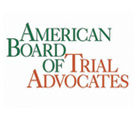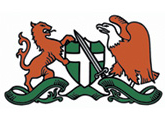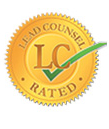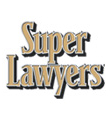Car collisions can occur to anybody and under any circumstances. Understanding the reason why the accident occurred is essential as it helps in deciding who is responsible for it. However, knowing the kind of crash you were in can also be relevant when filing a claim. The type of collision can affect the nature and scope of the injuries to the victim, which in turn, determines how much their compensation will be. Specific forms of crashes also result in assumptions about which party might have been to blame, which you might need to consider if you’re bringing a lawsuit.
In this article, the Los Angeles Car Accident Attorney provides an overview of classifications of car accidents, based on the kind of impact. If you get involved in any form of the crashes discussed below or any other kind of accident, reach out to us immediately. Upon reviewing your situation, we will determine whether you can file a claim or not. If you qualify to bring a lawsuit, we will fight for you to ensure you obtain the best possible compensation that you deserve.
Rear-End Collisions
A rear-end crash refers to a car accident that happens when a motor vehicle smashes into another that’s before it. This kind of accident could take place because of deceleration or braking by the front auto, or the moment the vehicle behind accelerates speedily compared to the one before it. Passengers of the hit motor vehicle will generally sustain many severe injuries. A rear-end collision is quite common in cities as well as towns with stop & go traffic. However, they might sometimes also take place on a freeway and highway.
One typical injury that arises from a rear-end accident is whiplash. It may arise even when a rear-end collision occurs at a modest speed. The motorist of the auto that rear-ended the other would often be to blame, This is due to their failure to keep a secure distance, following the auto in front so closely, or failing to pay the needed attention.
But, not all rear-end are entirely the error of the motorist behind. One exceptional situation may be the time the hit car is engaging the reverse gear. Other cases could be when the motorist in front unexpectedly enters the traffic lane of hind drivers, thus, blocking the vehicle that’s behind. Similarly, in case the tail light or brake light of the automobile in front Isn’t working correctly, it makes it difficult for the vehicle that is behind to understand its intention or operation. This, in turn, may make the motorist in front liable for the rear-end wreck.
Injuries incurred in rear-end collisions may vary from whiplash, as we had discussed earlier on, neck & back pain, spinal cord injuries, etc. At times, this type of accident may result in death.
The most dangerous kind of a rear-impact crash involves minivans since they benefit little from the slight hind crumple region. This may appear frightening since the vehicle occupants sitting behind the car involved in this form of an accident will likely sustain severe injuries, and, in given cases, get killed.
Side-Impact Crashes
Side-impact collisions are also referred to as T-bone or broadside accidents. These accidents happen when the hind/front part of a vehicle or any fixed item collides with a side of another car. Passengers sitting around the area that’s hit will often suffer more acute injuries than what they generally would if it were a front/rear-end accident.
T-bone wrecks happen most commonly at intersection zones when a motorist does not stop after seeing stop signage, traffic, or red light, or does not yield the right of way to the other motorist. This accident may also happen when a motorist turns left in front of an approaching auto. Broadside crashes will most likely lead to severe injuries and losses. The motorist and the passengers could sustain broken limbs, brain damage, or spinal fractures in these kinds of accidents.
One reason for a broadside crash resulting in severe injuries and losses is the vehicles are usually knocked off track, which results in a subsequent crash. The side-impacted automobile might be pushed on the side toward the approaching traffic or the side of the road. The crash’s force might also result in the striking car to spin towards the direction of the other automobile.
As the car goes off-track, it elevates the dangers of further trauma and accidents like colliding with guardrails, other automobiles, telephone poles, etc. Based on the impact of the wreck, the side-impacted auto might completely roll over especially if it’s pushed down a hill or on a sloping roadway.
The nearness between the motorist/occupants of the T-boned auto and the area of impact is not that much when it comes to T-bone accidents. This elevates the likelihood of more acute injuries. Contrarily, head-on and rear-end wrecks have a substantial distance between an occupant and the front as well as rear auto bumpers, which provides increased security than in situations of a broadside collision.
Several new vehicles now have crumple zones that absorb broadside impact and might also have airbags. However, The moment a high-speed-moving auto hits closer to the region that the broadsided car’s occupants are, the danger of severe damage and injuries will still be great.
Broadside accidents are rampant in urban setups because it’s in cities that we have many junctions. Unluckily enough, these wrecks are hazardous and might sometimes result in death. The injuries an occupant or the driver might sustain in a side-impact collision include brain injuries, broken limbs, and spinal fractures.
Sideswipe Collisions
Sideswipe collisions are whereby the side of one vehicle swipes or touches the side of another automobile that is traveling parallel to it. If both autos are headed in one direction, and both motorists can have their vehicles under control during the accident, the automobiles may only have cosmetic damage.
Generally, a sideswipe wreck could take place if a motorist shifts to another traffic lane without making sure there isn’t any other auto in that other lane first. For other situations, a motorist could drift into the next lane mindlessly due to their failure to pay attention. The driver at fault could be speaking with his/her passenger, taking care of a minor, using an iPad or phone, might be drunk or on drugs, or merely so tired that he/she could not drive.
Alternatively, sideswipe crashes may take place where two traffic lanes integrate. In case the motorist doesn’t check to see that there’s enough space for a safe merging, or another motorist quickly increases speed and then takes up the available space, a collision could take place.
A sideswipe collision can cause severe injuries. Typically, vehicles provide much protection against head-on as well as rear-end collisions. But when it comes to sideswipe crashes, that space between a vehicle’s occupant and the side of an automobile where the wreck happens is so small. Moreover, a sideswipe crash could result in a subsequent accident with other cars, a tree, a guardrail, a concrete barrier, a road sign, or a light post.
Vehicle Rollover
Vehicle rollover accidents may occur when a car flips over on the side/roof. Generally, rollover collisions happen when an automobile makes a sharp turn when traveling at an elevated speed. Whereas rollovers might occur for any auto, SUVs are often at an elevated risk. This is because of their higher height and higher center of gravity. The moment these factors combine with high speed, the danger of car rollover increases. The rate of death in rollover collisions is quite higher when compared to the other kinds of car accidents.
A vehicle rollover crash can be categorized as an untripped or tripped accident. A tripped crash happens as a result of the external items force, like colliding with restraint or another car. Contrarily, an untripped accident could result from speeding, friction from the ground, and steering input. In an untripped accident, the automobile gets destabilized because of the cornering forces. While an auto goes around a corner, its tires’ cornering forces push it to the curve’s center.
Compared to side-impact, front-end, or rear-end crashes, vehicle rollover accidents are highly perilous for the occupants of the vehicle. The main reason is when it comes to average PSVs; their roof is most probably to fall in on the auto’s occupants, leading to severe head damage. Cars would be much safer in case they are fitted with safety cages. But, the only challenge is using them in most kinds of PSVs would reduce the space of luggage and passengers to the degree that installing them is unrealistic.
Head-On Crashes
Head-on collisions are whereby the front parts of two vehicles hit one another. These are one of the most dangerous car accidents since the force becomes twice as much because of the opposing of the two autos. Consequently, even a somewhat slower accident of this kind with each automobile moving at 30 miles per hour will result in a double crash that’s equal to the impact striking a tree or any other object at 60 miles per hour. As most people usually drive at elevated speeds, there are chances that head-collisions may cause a crash of between 70 and 80 miles per hour on average.
These kinds of collisions are most probably to happen when one driver, because of failing to pay attention, or due to intoxication, shifts to the approaching traffic lane, resulting in a head-on crash. Head-on collisions may also take place when a motorist attempts to turn left across oncoming traffic without being attentive to the approaching vehicle. The dangers of head-on collisions increase in conditions of poor weather, for instance, ice and snow.
A substantial number of deaths in car accidents happen because of head-on crashes. As per various studies, head-on accidents account for about 10% of all car accident fatalities in the nation and accounts for only 2% of all automobile accidents.
Severe injuries arising from head-on collisions include scarring, head injuries, burns, and broken bones. Fractures that might commonly arise in these types of crashes include pelvic fractures, foot & ankle fractures, and leg fractures. Elbow & wrist injuries could also arise for the motorist, based on their arm’s position on the steering wheel.
In rear-end collisions, the passenger might escape sustaining severe injuries due to the headrest and backseat. However, when it comes to head-on crashes, the vehicle occupant might get thrown forward and into the windshield, airbag, or seatbelt, if they are not putting on a seatbelt. In these types of accidents, airbags deploy almost all the time, which may lead to further damage to the ears, face, and eyes. Seatbelts in a head-on collision can hold the vehicle’s occupant with substantial force, causing injuries like hematomas, bruises, punctured lungs, and fractures.
Multi-Vehicle Pile-Ups
These types of accidents are also called multi-vehicle crashes. These are collisions that involve multiple vehicles. Typically, wrecks like these are common on freeways and highways. The cars involved in a pile-up might be struck numerous times, raising the danger of injuries to the occupants. Cars may whirl during the pile-up, then in the process get knocked from the two sides. These kinds of collisions are specifically dangerous since the extensive weight of crumpled autos could make it quite challenging for a survivor to escape.
At times, a survivor can manage to get away from the vehicles, and then get knocked over by other cars. A vehicle in this form of a crash could be struck the second time when moving at an increased speed. This elevates the dangers of injury to passengers that may have escaped the initial crash due to airbags, which by then would be discharged. Second accidents after the occurrence of the first one could occur from a position where the occupant is more vulnerable.
In case of a fire breakout on one side of the accident, it might quickly escalate to the whole site of the crash because of spilled gasoline. Larger crashes like this overwhelm rescue teams like the police, ambulance, and firefighters, which makes rescues difficult. In case of a pile-up in a remotely located place, deploying emergency medical help to these places can be next to impossible.
The heat the fire produces in these kinds of collisions can burn & melt the asphalt on the roadway or damage the surface made of concrete. Further, the fire might weaken a bridge or overpass structure. A multi-vehicle pile-up accident occurring in an underpass and involving fire can be much hazardous. This is because there’s a small room for fleeing the poisonous smoke plus the heat.
These types of crashes take place mostly in reduced visibility states on highways as the motorist might get dangerously nearer the auto before it and not have the chance of mastering the conditions of the roadway. The collisions might even take place when there’s good visibility, but the motorist encounters sudden road hazards.
If two automobiles get into an accident, the high traffic volume on roadways might compel the following cars to brake & skid. Due to this, the autos may dash into other traffic lanes and also against the approaching traffic. Chain reactions of crashes start the moment more cars are involved.
Hit and Run Crashes
Hit & run accidents are typically defined as involvement in a vehicle wreck with another auto, fixed item, or pedestrian, and driving off from the scene as soon as the crash occurs without first identifying yourself or giving assistance to a person that might require help. The moment the party to blame chooses to run away from the site of the accident without informing the police officers or speaking to other involved parties; it’s termed as a hit & run.
An illustration of this type of accident is an auto striking another and then driving off or a motorist striking a parked automobile and driving away, having not left contact details. Reasons a motorist may speed away from the scene of the accident are:
- The driver isn’t insured.
- The driver was under the influence.
- The vehicle was stolen.
- The motorist panics then flees the site.
If you’re involved in this type of a wreck, you can do the following if you feel mentally/physically fit:
- Call law enforcement officers and notify them of the facts of the collision without speculations.
- Give all identifying details you can about other vehicles involved in the crash and the drivers of which you can remember.
Identifying information may be the color of the automobile, its model, license plate number, and make. If you can, take pictures of the site of the crash and identify eyewitnesses that can back up your account about the wreck. Also, go for a medical checkup and reach out to a skilled auto accident personal injury attorney to help you with the process of filing a claim.
In these forms of accidents, the best probable outcome would be the police managing to catch the liable driver. If this happens, you can go ahead with filing an injury suit as it would be for any other type of collision. But, in case the responsible driver can’t be located after the wreck, you can still be capable of proceeding with the process of bringing a claim using your uninsured driver insurance coverage.
Single Vehicle Accidents
Single-vehicle collisions are also another common form of crashes. They take place when a single car leaves the roadway and hits a still object on the roadside, for instance, an electricity pole, tree, or fire hydrant, wall, or a guardrail. Sometimes, these accidents may involve pedestrians or innocent bystanders. They usually occur when the motorist is inattentive or is driving in adverse weather conditions like rain or snow. Other reasons include intoxicated drivers, mechanical failures, and speeding.
These types of accidents can often lead to significant damage to the car and substantial injury to the driver and any occupants of the vehicle. This is because cars that drift from the roadway are usually going at elevated speeds and are exceedingly hard to control. Additionally, most of the still items that are hit in these crashes like trees aren’t much of shock absorbents.
In many cases, the motorist is held responsible for the wreck. However, if the collision was a result of brake failure, then the manufacturer may be to blame.
Wrong-Way Accidents
Wrong-way car accidents are severe every time they occur. It isn’t difficult to figure out why. Two cars traveling at a modest to higher speeds usually have a reduced period to react before the collision. The resulting impact will create a significant force, leading to substantial intrusion in the two involved autos. A wrong-way accident usually causes catastrophic damages, and sometimes fatalities.
A common reason for wrong-way accidents to happen is drivers driving while drunk. But this isn’t the only reason. Missing or otherwise improper signs, thick vegetation obscuring signage, poor lighting roadway construction that alters the regular flowing of traffic, drivers that are not familiar with particular roads, distracted drivers, can all lead to wrong-way accidents. Sometimes, these causes can combine to lead to a fatal form of accident.
Hire a Car Accident Personal Injury Attorney Near Me
Injuries sustained from any type of accident can be severe. Others could be permanent, depriving you of the opportunity to enjoy life as you used to do before the accident. If the crash happened because of another person’s negligence, you could be eligible to recover damages for your injuries and losses. Since personal injury laws are complicated, it may be difficult to know what steps to take after an accident. Speak to a lawyer as soon as possible and give your account of the crash so they can help you figure out if you can bring a claim. The lawyers at Los Angeles Car Accident Attorney have assisted a considerable number of accident victims in LA to get just compensation. We will thoroughly investigate your situation, build a strong case, as well as negotiate for fair compensation. Contact us at 424-237-3600 if you‘ve been in a car accident for a cost-free consultation.






